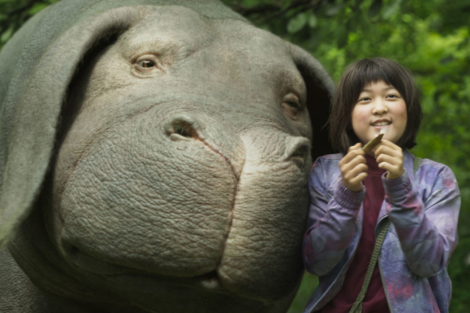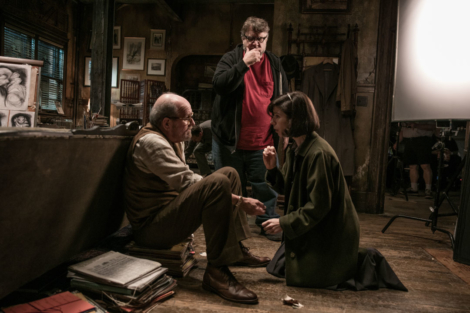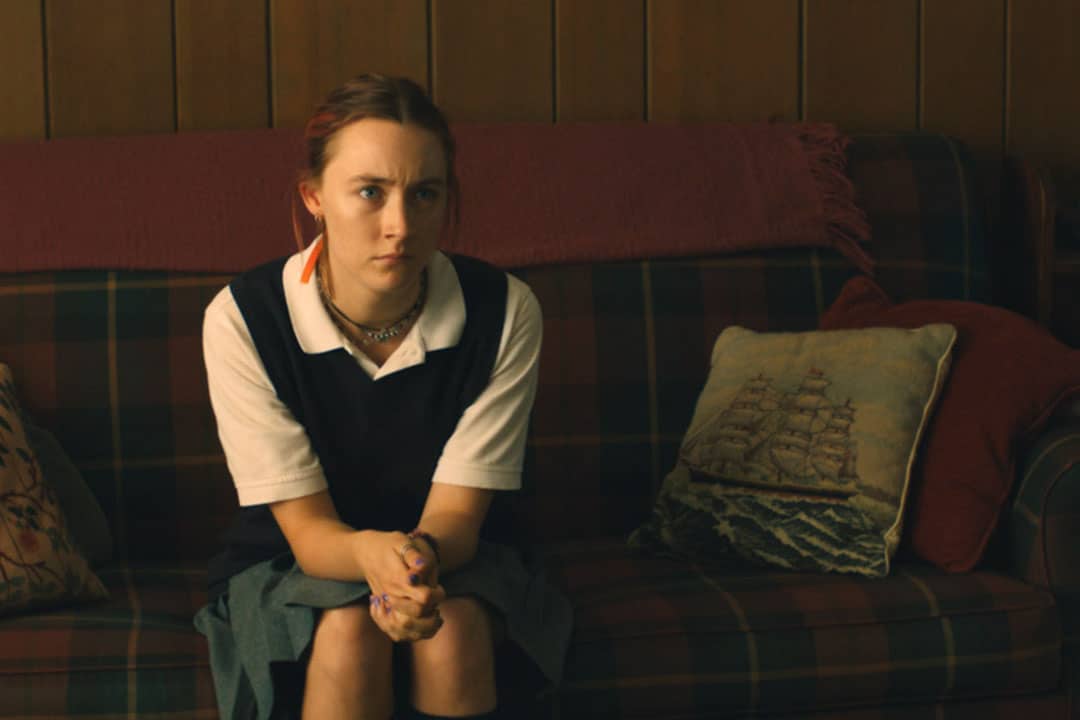Last year saw many great film releases, with an increasingly diverse crop of filmmakers competing for a wide berth of awards. Here are 2017’s top 10 films, and how they stack up.

COURTESY OF TIFF
10. Mudbound
The story of two families who share an intertwined existence — white landowners in rural 1946 Mississippi and the Black tenant farmers who live on their land — Mudbound isn’t a film containing neat messages about racism, classism, or post-World War II post-traumatic stress disorder, though the film does ably tackle all of these. Instead, it’s a sprawling, timely, and compassionate tragedy, one in the vein of epics that Hollywood seems to make no longer, like Reds and The Killing Fields. Mudbound asks what can truly be ours within a life of servitude caused by systems that imprison us — and what happens when those systems reach a breaking point.
Mudbound has been nominated for four Academy Awards, including Best Supporting Actress for Mary J. Blige. It deserves more, especially in categories such as production and costume design, but being recognized at the Oscars at all is a big step for a Netflix-released film, and it signals changing times in cinema.

COURTESY OF TIFF
9. Foxtrot
Using a non-linear narrative that centres on the parents of a deceased Israeli soldier, Foxtrot is a fascinatingly unpredictable movie. It ingeniously frames how grief makes everything around you seem alien and unappealing. It also contains a long sequence of a soldier dancing with his rifle, and even stretches of animation.
In Foxtrot, director and writer Samuel Maoz doesn’t ignore the complications of the Israeli-Palestinian conflict — Israel’s Minister of Culture and Sport, Miri Regev, has slammed the film — but he also doesn’t allow them to consume the film. Rather than offering tidy messages about hope, Foxtrot shows the surreal absurdity of finding hope and levity while living within the despair of constant war, and in doing so, it becomes a unique, brilliant movie.
Foxtrot was Israel’s entry in the Oscars’ Best Foreign Language Film category, and it made the December shortlist. While it had promising chances of being one of the five eventual nominees, in the end it didn’t make the cut.
8. Faces Places
The premise of Faces Places, one of the best documentaries in years, might seem like it can’t support a whole film. It depicts a road trip taken by famed French New Wave director Agnès Varda, 89, and renowned French street artist JR, 34. The pair travel throughout rural France and create portraits of the people they encounter — and that’s it.
At under 90 minutes, Faces Places is beautiful in its simplicity. It’s hard to explain what makes it such a magical experience to see. Part of it is seeing the spirit of Varda, whose sight is failing, refuse to waiver in her work, and seeing how both Varda and JR, who make a frequently hilarious odd couple, delight in the details of every story they hear.
Faces Places is nominated for Best Documentary Feature at the Oscars, and it has a good chance at the golden statuette.
7. Columbus
Columbus concerns Jin (John Cho), a Korean-American translator working in Korea, who returns to his hometown of Columbus, Indiana after his father falls into a coma. Columbus is a haven of architectural modernism, and much of the movie consists of beautiful, slow shots of buildings from Jin’s past, as he visits them with Casey (Haley Lu Richardson), a young woman who has chosen to stay in Columbus to take care of her mother.
It’s difficult to articulate the serenity of Columbus. It’s a movie that is at turns passionate and calming, statuesque and hypnotic, yet messy and creative, like the buildings of Columbus itself.
Columbus has gone largely unnoticed during awards season, though it is nominated for four Independent Spirit Awards. Even so, this doesn’t rule out future hits for debut filmmaker Kogonada, whose previous experience consisted solely of making video essays posted to YouTube.
6. Get Out
Following its release last February, Get Out became one of the year’s most acclaimed films, totally unique in its examination of subjects like the wilful ignorance and racism of upper-class, mostly white liberals. It’s one of the best, smartest horror films in recent memory, frequently breaking out into starkly funny moments of absurdity, where you can see writer-director Jordan Peele’s cutting sense of humour shining through.
Not only is Get Out nominated for five Independent Spirit Awards, it has received four Oscar nominations. Peele has become the third person, after Warren Beatty and James L. Brooks, to receive simultaneous nominations for Best Picture, Screenplay, and Director for a debut film. Lead actor Daniel Kaluuya also became the 14th ever Black person to receive the nomination for Best Actor — all are huge achievements for a social thriller such as Get Out, the likes of which which usually go ignored by the academy.

COURTESY OF NETFLIX
5. Okja
Bong Joon-ho, the Korean director of Snowpiercer, continues his run of bitingly effective satires with Okja. The titular Okja is a superpig, a genetically modified organism bred for meat by the Mirando Corporation. Okja’s friendship with a young girl and subsequent interventions by militant animal rights groups and celebrity zoologists cause havoc. Although Okja has all the chases and inspiring motifs of a classic Steven Spielberg movie, it’s a corporate satire at heart, in the vein of Network, cutting deep into the parts of society that prioritize profit above all else.
Okja has largely been ignored by awards organizations thus far, perhaps because of its release on Netflix during the summer — but it’s a thrilling, moving film that deserves your attention nonetheless.

PHOTO BY KERRY HAYES, COURTESY OF REBECCA SHAOLTS
“This time, the monster’s going to fuck the girl.” This is what director Guillermo del Toro is reported to have told Doug Jones, his collaborator and monster model in previous movies such as Pan’s Labyrinth and Hellboy, when preparing for The Shape of Water.
The movie is about the mute Elisa (Sally Hawkins), who discovers an “asset,” an amphibious man (Doug Jones), being held in the Baltimore government lab she cleans, and falls in love with him. The Shape of Water is one of the best monster movies made in years, but it’s also so much more than that.
It’s a movie that has a palpable, gleeful distaste for the institutions that deny us personal freedoms, a love letter to movie monsters, and a triumph of artistic expression. There are so many recurring nods to the film’s contempt for oppression that it becomes hard to count, but it never feels overwhelming; del Toro’s love for the movie, and of monsters, always shines through.
After being personally shut out of nominations for his previously acclaimed films, Guillermo del Toro has earned nominations for Best Picture and Best Director, alongside 11 other Oscar nominations. Hawkins and Richard Jenkins are nominated for their roles, and the film has also dominated the creative nominations.

COURTESY OF TIFF
3. Lady Bird
In Lady Bird, writer-director Greta Gerwig has created a movie where everything seems real. In a tight 93 minutes, she deftly balances the kind of zany humour and sudden heartbreak between which we all pivot while growing up. Despite its deceptively simple plot, about a girl (Saoirse Ronan) about to graduate high school and her relationship with her parents (Laurie Metcalf and Tracy Letts), Lady Bird reveals itself to be incredibly deep because of its refreshing approach to vulnerability.
Lady Bird’s problems with friends, her mother’s fear of losing her, her father’s depression — none of it ever seems fake or constructed. Lady Bird is the funniest movie of last year, but it might also be the saddest, too.
At only 23, this is Saoirse Ronan’s third time being nominated for an Oscar, and Gerwig has also become the fifth woman ever nominated for the Academy Award for Best Director. Lady Bird is also nominated for Best Picture, a category in which it’s a formidable opponent.
Call Me by Your Name is another movie that is seemingly simple in narrative. It’s about 17-year-old Elio (Timothée Chalamet) during the summer of 1983 in Italy, where his academic father (Michael Stuhlbarg) hires Oliver, a graduate student (Armie Hammer), to work on a summer project; Elio and Oliver fall in love.
Aside from the sumptuous, rich atmosphere that director Luca Guadagnino and writer James Ivory create, what most stands out about Call Me by Your Name is that it’s an incredibly compassionate film. Its depiction of love isn’t innocent, but it’s not jaded, either — it’s genuine and uninhibited. The film perfectly captures the idyll and tenderness of falling in love for the first time and the pain of watching it slip away.
“Nature has cunning ways of finding our weakest spots,” Elio’s father says to him in a heartbreakingly powerful ending monologue. Indeed, Call Me by Your Name never feels anything less than natural.
Since the Sundance Film Festival last January, Call Me by Your Name has been acclaimed by almost every awards association. It’s earned four Oscar nominations, including nods for Best Picture and Adapted Screenplay. At 22, breakout star Chalamet is also the youngest actor since 1939 to be nominated for Best Actor, and he’s the third youngest ever.
1. Blade Runner 2049
Many films last year defined themselves by a contempt for institutional oppression, and that message is at its most powerful in Blade Runner 2049. Denis Villeneuve and his collaborators — chiefly Roger Deakins, his cinematographer, who does the best work of his career here — have done the impossible: they have created a brilliant sequel that can just as easily stand on its own.
Taking place 30 years after the original Blade Runner, Blade Runner 2049 is about Officer K, a replicant, or manufactured human, and an LAPD “blade runner,” made to hunt down and kill other replicants who have outlived their predetermined lifetimes.
More than anything, the visually marvellous dystopia that Blade Runner 2049 presents is a institutionally tired one. It’s a future where climate change has won and the air is toxic, a future where we have given in to the pressures of capitalism and continued to treat women’s bodies as commodities. In a time where we are on the cusp of the widespread usage of industrial AI, this dystopia raises important questions.
Despite all of this, Blade Runner 2049 manages to be a fundamentally hopeful movie, using poignant motifs about individuality and the uniqueness of memory to inspire hope. One scene in particular, involving visually designing a dream, is one of the most heartbreaking and magical scenes put on screen in 2017. Unconcerned with neat answers and much more focused on providing emotional responses to existential questions, Blade Runner 2049 is a stunning achievement.
The film has chiefly been ignored by many awards associations, including the Oscars, outside of technical categories like cinematography and production design. That said, producing a brilliant sequel to an original as iconic as Blade Runner is an achievement in and of itself. It will be recognized more in years to come.


